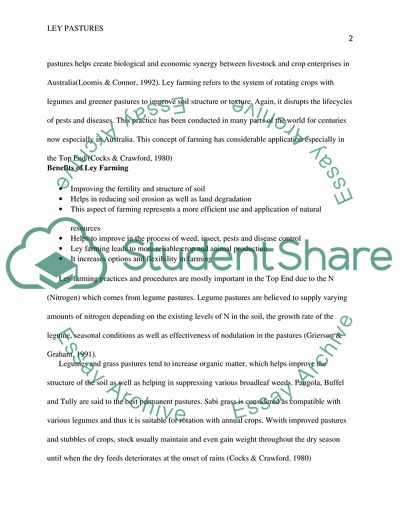Cite this document
(Importance of Ley Pastures in Farming Systems in Australia Essay Example | Topics and Well Written Essays - 1500 words - 1, n.d.)
Importance of Ley Pastures in Farming Systems in Australia Essay Example | Topics and Well Written Essays - 1500 words - 1. https://studentshare.org/agriculture/1866557-grns-402-grains-and-the-environment
Importance of Ley Pastures in Farming Systems in Australia Essay Example | Topics and Well Written Essays - 1500 words - 1. https://studentshare.org/agriculture/1866557-grns-402-grains-and-the-environment
(Importance of Ley Pastures in Farming Systems in Australia Essay Example | Topics and Well Written Essays - 1500 Words - 1)
Importance of Ley Pastures in Farming Systems in Australia Essay Example | Topics and Well Written Essays - 1500 Words - 1. https://studentshare.org/agriculture/1866557-grns-402-grains-and-the-environment.
Importance of Ley Pastures in Farming Systems in Australia Essay Example | Topics and Well Written Essays - 1500 Words - 1. https://studentshare.org/agriculture/1866557-grns-402-grains-and-the-environment.
“Importance of Ley Pastures in Farming Systems in Australia Essay Example | Topics and Well Written Essays - 1500 Words - 1”. https://studentshare.org/agriculture/1866557-grns-402-grains-and-the-environment.


